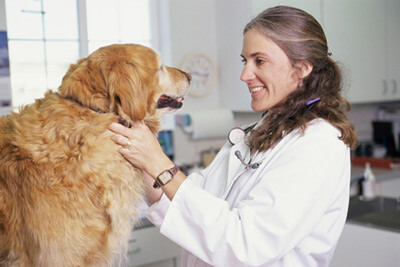If your dog is suffering from cancerous tumors or irritating skin growths, he may be a great candidate for cryosurgery. This effective, relatively painless procedure serves as a great alternative to treatments that may require long recovery periods and pose serious health risks.
What Does Cryosurgery Treat?

Cryosurgery, or cryotherapy, is a minimally invasive technique used to treat abnormal or diseased tissues such as skin tags, warts, infected or itchy lesions, cysts, and cancerous tumors on pets. Growths on the skin, in the perianal area, and mouth have all been successfully treated with cryosurgery.
Dog owners who feel that more traditional approaches are not suitable for their pets can opt for cryosurgery. Older dogs and those with medical conditions that prohibit surgery are great candidates for cryosurgery because the procedure and recovery are simple and quick, and the side effects are minimal.
Common Conditions Cryosurgery Is Used to Treat in Dogs
Veterinarians often recommend cryosurgery to address a variety of skin-related and surface-level conditions in dogs. Some of the most common include:
Skin Tags and Benign Growths: These are non-cancerous lumps or bumps that may appear due to age or genetics. While often harmless, they can become irritated, especially if located in areas prone to rubbing or scratching.
Papillomas (Warts): Common in younger dogs or those with compromised immune systems, these viral warts can spread easily. Cryosurgery effectively removes them without causing trauma to the surrounding skin.
Perianal Gland Tumors: These tumors, located near the anus, can be uncomfortable and may lead to infection. Cryotherapy is a less invasive alternative to surgical removal.
Cysts and Sebaceous Gland Tumors: These can rupture, become infected, or cause discomfort. Freezing them with cryogen offers a safe and effective solution.
Because cryosurgery is minimally invasive, it is often ideal for small, localized growths or lesions that don’t require extensive surgical excision. Many pet parents also appreciate that the procedure is less stressful for their dogs, especially those who are older or medically fragile.
How Does Cryosurgery Work?
Cryosurgery involves applying cryogen, or liquid nitrogen, to the area in question. The cryogen “freezes” the area, killing the abnormal cells and halting further growth. The cryogen is applied either as a spray or through a microneedle, both of which afford doctors excellent control over the application to target the affected area and preserve the surrounding skin. The frozen growth quickly turns red and blisters.
Within 2-3 weeks, a scab forms and falls off, revealing healthy, lesion-free tissue in its place. Local or general anesthesia may be necessary based on the location of the growth and temperament of the dog; however, there are cases in which no anesthesia is required.
How Effective is Cryosurgery?
In many instances, cryosurgery resolves tumor issues altogether, frequently after only one treatment. Small warts and tumors rarely recur, and cancerous mouth and nasal tumors often go into remission after a single treatment as well. Cryosurgery can also be used in conjunction with traditional surgery to improve overall results, target growths in difficult-to-reach areas, and reduce recovery time.
Benefits of Cryosurgery for Dogs:
- Minimal or no anesthesia is required
- Same-day, outpatient procedure
- Minimal pain/discomfort
- Simple recovery and aftercare
- Quick healing, no sutures
- Treats hard-to-reach/slow-healing areas
- Can be combined with conventional surgery
- Affordable
The Animal Medical Center of Streetsboro now offers cryosurgery with Cool Renewal® for pets. If you think your dog might benefit from this procedure, don’t hesitate to contact us at 330-249-7851 for more information or to schedule an appointment to have your dog evaluated for candidacy.

